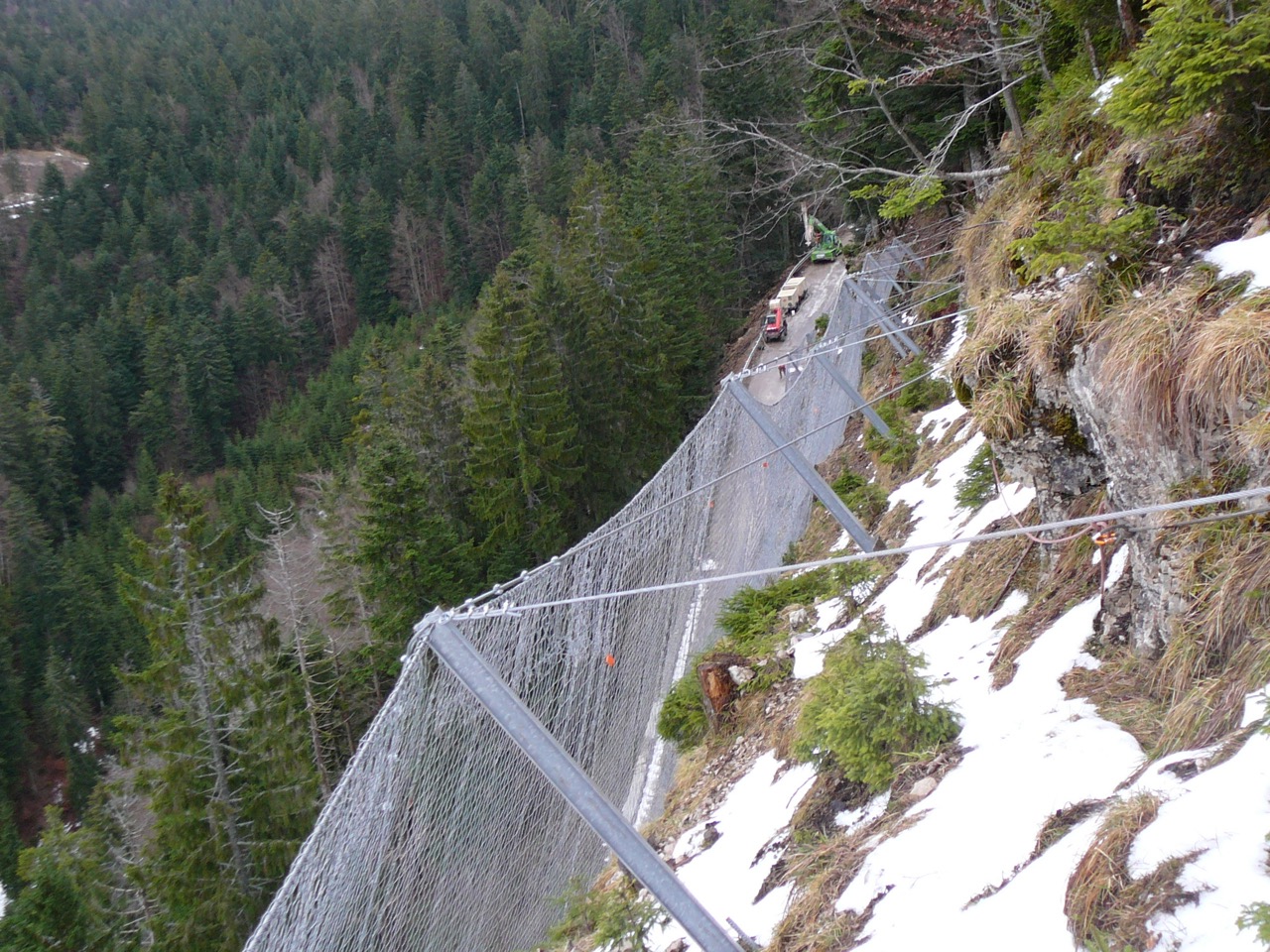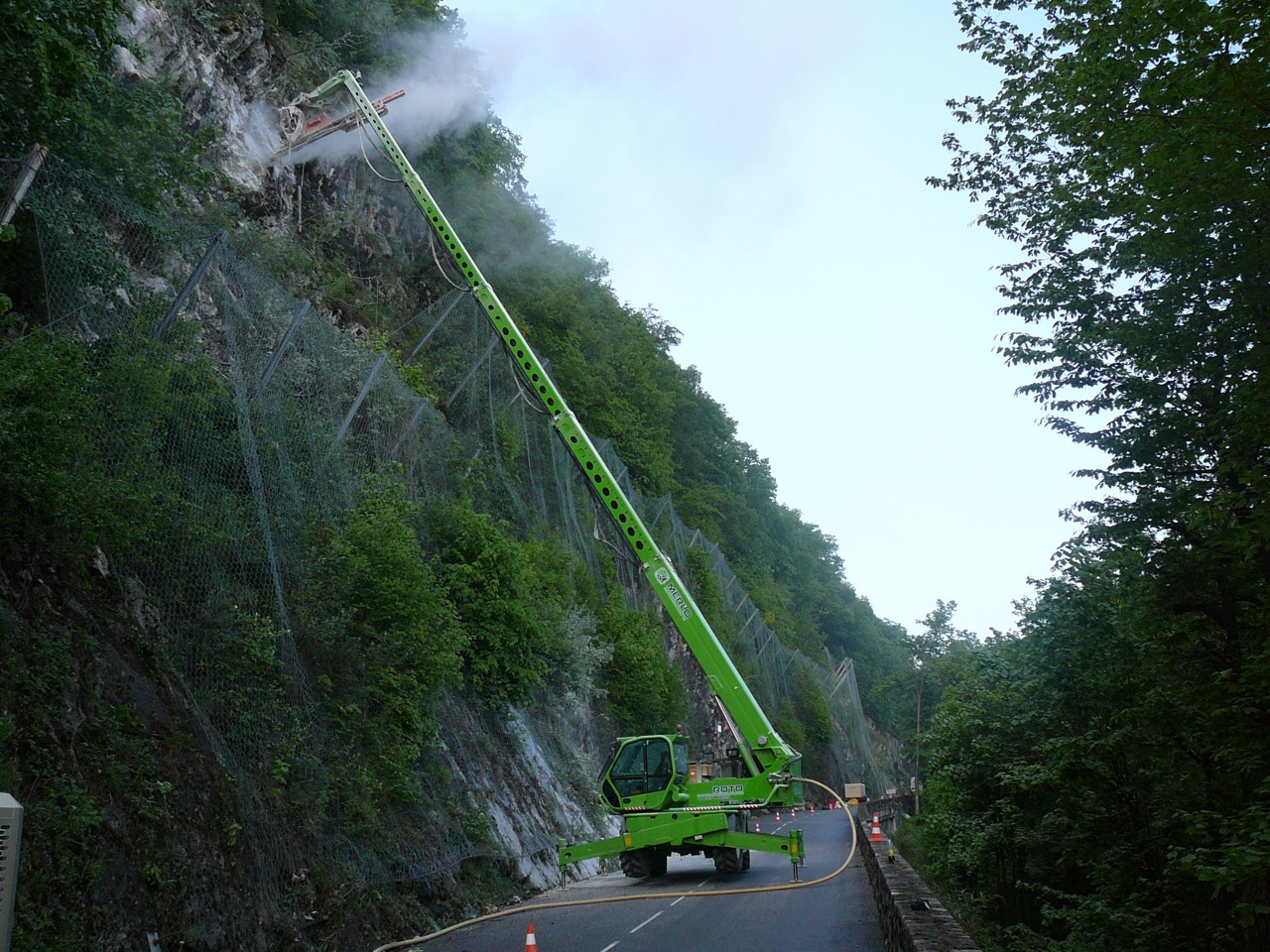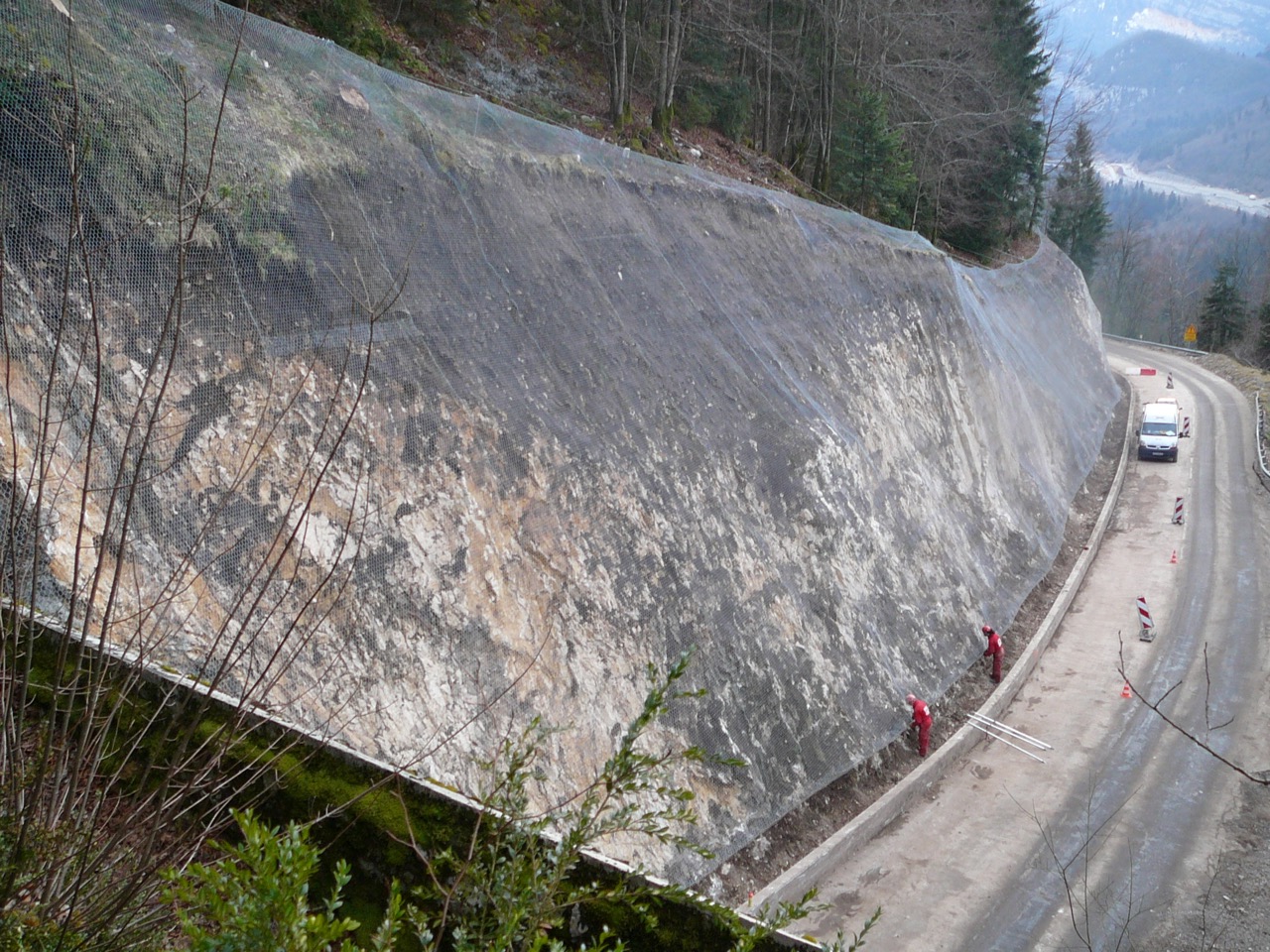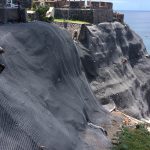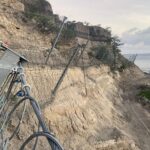
Draped mesh: an economical solution for slope and cliff Protection
What is Draped Mesh?
Draped mesh is a surface protection system designed to manage small-scale rock instabilities. It guides unstable rock fragments, which descend either by bouncing or sliding, safely to the base of the slope without uncontrolled propagation.
The mesh is secured at the top of the slope using anchors, elevated bars, or guyed posts, creating a collection zone (or “apron”) that channels debris coming from above. At the base of the slope, the mesh is typically:
- Weighted: Ensures sufficient tension and directs falling rocks.
- Offset: Using cables and anchors, facilitating the smooth passage of rocks to the ground.
A Passive Protection System
Draped mesh is a passive protection solution designed to:
- Prevent rock propagation beyond the base of the slope.
- Redirect unstable materials downward to minimize risks.
However, this system does not reinforce rock faces. Large blocks exceeding several cubic meters may tear through the mesh, requiring additional measures, such as:
- Reinforcement using anchors or cable nets.
- Targeted purging of unstable elements.
- Direct nailing of critical zones.
Draped Mesh: An Economical Protection Option
Draped mesh stands out as the most cost-effective solution for slope and cliff protection due to:
- The absence of anchoring reinforcement.
- A simplified installation process with minimal maintenance requirements.
Material collection at the base is straightforward and can be performed:
- Manually for smaller debris.
- Using mechanical equipment for larger accumulations.
Limitations of Draped Mesh
- No Control Over Natural Evolution: Draped mesh does not prevent natural processes such as erosion or the formation of new instabilities.
- Ineffective for Large Instabilities: This system cannot withstand major rockfall risks or significant instabilities, where more robust solutions such as tensioned mesh or cable nets are required.
When to Use Draped Mesh?
Draped mesh is particularly suited for:
- Slopes and cliffs with minor instabilities.
- Situations where an economical solution is a priority.
- Sites where the goal is to channel falling debris without extensive intervention on the rock face.
Conclusion
Draped mesh offers a practical and cost-effective solution for managing small-scale instabilities. However, it requires a thorough risk assessment to ensure its capabilities are not exceeded. For larger risks or significant instabilities, complementary reinforcement solutions should be considered.
Acrobat X specializes in evaluating and implementing tailored protection systems for slopes and cliffs.
Contact us for expert advice and customized solutions to secure your site effectively.

